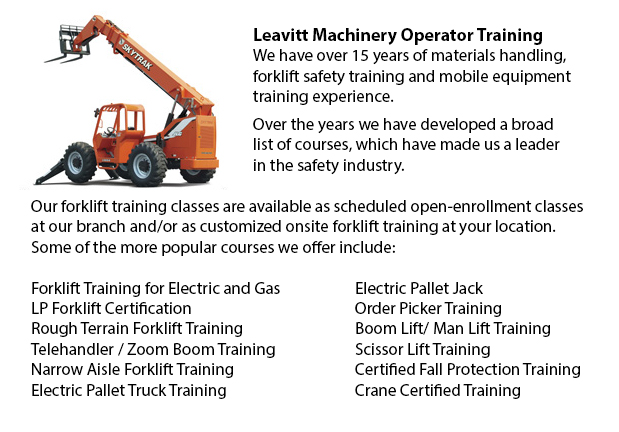
Telehandler License Penticton - The telehandler or telescopic handler is a normally utilized machine in agricultural and industrial applications. This particular machine is the same in look to a forklift and also works in a similar way, though telehandlers are much more like a crane than forklift. It has a telescopic boom which can lengthen upward and forwards from the motor vehicle. The boom has the capability to fit one of various accessories like muck grab, pallet forks, a bucket or a lift table.
Pallet blades are the most common attachment meant for the telehandler. This equipment is most often used for moving loads to and from places which a standard forklift will find inaccessible. Telehandlers are specially useful for placing loads on rooftops for example, or for removing palletized cargo from with a trailer. Many of the tasks which a telehandler can carry out would otherwise require a crane and this particular machine can be expensive, impractical and not always time efficient.
The boom acts as a lever, extending and raising while bearing a load. Even if there are back counterweights, this may cause the telehandler to become more unstable. Hence, the greatest advantage of the telehandler is also its greatest limitation. As the working radius increases, the lifting capacity lessens. The working radius is defined as the distance between the center of the load and the front of the wheels.
The telehandler with a 5000 lb capacity for instance, with a retractable boom can safely lift as little as 400 lb at a fully extended boom at a low boom angle. Equivalent machinery with a lift capacity of 5000 lbs and a retractable boom that can support as much as 10,000 lb with the boom raises to roughly 70 degrees. The operator has a load chart to help determine whether a certain lifting job could be done in an efficient and safe way. This chart takes into consideration the weight, height and the boom angle.
Lots of telehandlers come equipped together with a computer that makes use of sensors so as to monitor the motor vehicle. These sensors will warn the operator and some are capable of cutting off further control input if the limits of the motor vehicle are exceeded. Some telehandler kinds are also outfitted with front outriggers which are known as mobile cranes. These really extend the lifting capacity of the machinery while it is stationary.
-
Forklift Certification Schools Penticton
Forklift Certification Schools Penticton - In North America, forklift certification is mandatory, making forklift training programs essential for both the business and their employees working as operators of forklifts. Forklift training focuses on sa... More -
Telehandler Training Courses Penticton
Telehandler Training Courses Penticton - The employer has the responsibility to make sure that their personnel are trained to work proficiently utilizing telehandler machinery. The workers have to be assessed for their ability to utilize the machine.... More -
Certified Fall Protection Training in Penticton
There are many injuries at work linked to falling and lots of fall-related deaths reported each and every year. Most of these instances might have been prevented with better training, better precautions in place, and by properly equipping employees b... More -
Zoom Boom Training Penticton
Zoom Boom Training Penticton - Zoom Boom Training is designed to train operators on variable reach forklifts. The objectives of the training are to impart an understanding of the physics of the machine, and to outline the operator's job. This course... More -
Crane Training Schools Penticton
Crane Training Schools Penticton - We have designed various Mobile Crane Operation programs at our Crane Training Schools. These programs are recommended for the experienced operator who needs re-certification or certification, and for inexperienced... More -
Aerial Lift, Boom Lift, Man Lift, Scissor Lift Training in Penticton
Lift tables or also referred to as scissor hoists can lift up both individuals and materials vertically. They are normally utilized in industrial, construction and commercial environments. Normally, the use of a scissor forklift is to lift and lower... More -
Forklift Training Program Penticton
Forklift Training Program Penticton - The forklift is a common powered industrial vehicle which is in wide use nowadays. They are occasionally known as hi los, lift trucks or jitneys. A departments store will utilize the forklift to unload and load m... More -
Overhead Crane Training Penticton
Overhead Crane Training Penticton - An overhead crane is a large crane used to move and lift huge, heavy objects that cannot be lifted by hand. An overhead crane is normally fixed in position while in use. These machines are capable of moving huge vo... More

Forklift Training Penticton
TOLL FREE: 1-888-254-6157
Penticton, British Columbia
forklifttrainingpenticton.com
Email Us
About Us


